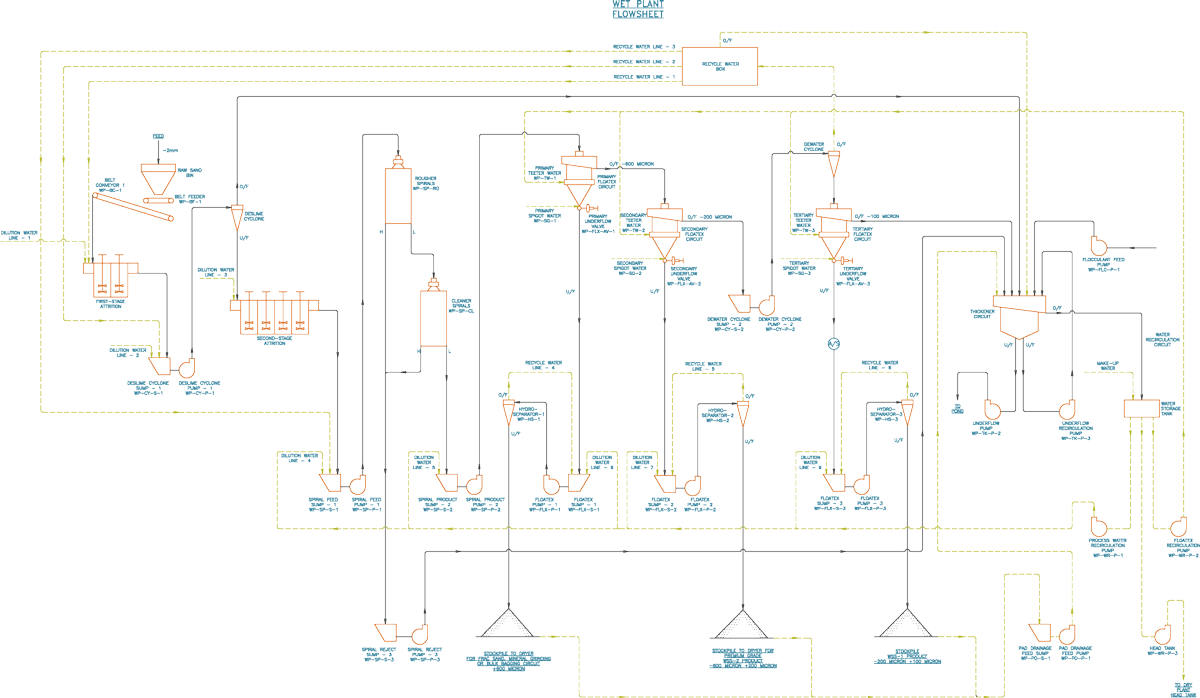Wrapping-Up
Flowsheet Development Series - Tips and Tricks
Taking the time to test and develop a flowsheet before you build an operation is the best way to ensure a profitable process. In the final week of our Tips and Tricks series we discuss the how to wrap up your work.
Wrapping-Up
Know your weight
Prepare a mass balance for your test program using the percent of head feed as the main “mass tracking tool.” This will eliminate confusion that could be created with weights removed during testing, i.e. your “retain” samples, stranded materials, mids streams, etc.
Model your flowsheet
Excel or canned software is available. If a flowsheet is complicated (recirculating loads) or certain parameters are highly variable these can be good tools.
Use testing data to develop adequate grade-recovery information to model the process.
Validate the model, then use it to help answer process step sizing questions, check recirculating loads, and understand flowsheet robustness and areas of concern.
Test the robustness of the flowsheet by evaluating other samples from the deposit to determine the effect of items, such as the ranges of particle size, mineralogy, etc., on grade and recovery.
The big picture
The last step is to bring everything together. Present a flowsheet with final predicted mass balance and recovery performances.
A test program ends with pulling together final mass balance and a recovery performance summary.
Start with a strong foundation
Developing a proper process is not complicated if you only know what steps to take. By knowing your goals, taking your time during testing, and paying attention to the “finer” details, you can layout an operation to produce your required products at the level of production you desire.
With all said, there may still be areas that don’t add up, or may be beyond your scope of capability onsite. For this, partnering early on with a reputable and knowledgeable laboratory, liked IMSC Group, can be the best investment you make. It is always better to start from a foundation based on thorough investigation than to build a plant destined to under-perform.
We hope you have found this series on flowsheet development helpful. Contact us to learn more about our services and how we can ensure you have an optimized flowsheet for your unique deposit.
Want to read more from this series?
Week 1: Introduction to flowsheet development
Week 2: Best Practices
Week 3: Pathfinding Tests
Week 4: Bulk Testing

